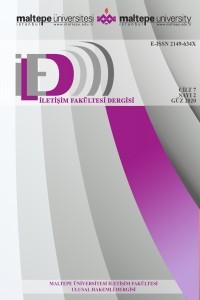Ülke Orijininin Kurumsal Kültüre Yansıması, Kurum İçi İletişim ve İnsan Kaynakları Uygulamaları: Ikea Örneği
Bir toplum içinde doğup gelişen kurumlara o toplumun kültürel öğeleri etki eder, kurumun kültürü içinde oluştuğu toplumun bir alt kültürüdür. Bu nedenle kurumların ülke orijinleri, kurum kültürleri üzerinde etkilidir. Kurum kültürü, çalışanlar tarafından paylaşılan; kurumun var oluş nedenini, iş yapma biçimlerini, hakim değerlerini, inançlarını içeren, çevresi ile iletişiminde kurumun rotasını çizen bir sistemdir. Kurum kültürüne çalışanların uyumunun sağlanması iyi iş sonuçlarının elde edilmesi açısından önemlidir. Kurum kültürünü etkileyen ülke orijini kavramının tarifi küreselleşme nedeniyle oldukça zorlaşmıştır. Küresel pazardaki aktörlerin çokluğu nedeniyle, çalışanlar için bütün dünya bir iş yerine dönüşmüştür. Ülke orijini konusuna yakından bakıldığında, “yeni İsveçlilik” denilebilecek bir kavramla karşılaşılır. İsveçlilik nedir? İsveç coğrafi olarak bildiğimiz dünyanın biraz dışındadır, eski bir sanayidir ve uzaklığı dezavantajıdır. Ancak çağın yeni iletişim teknolojileri ile bunları avantaja dönüştürmektedir, değişik sektörlerde bir çok markanın “İsveçli” olduğu fark edilmektedir. Scania, Volvo, Ericcson, Oriflame, IKEA bunlardan birkaçıdır. IKEA markası, perakende sektöründe “İsveçli” marka kimliği ve kurum kültürü ile yer almaktadır. IKEA iş fikri ve başarı kriterleri İsveç ulusal kültürüne dayandırılmıştır. IKEA başlangıçtan beri aynı kalan başarı kriterleri ve farklı pazarlarda tekrarladığı “tek, biricik “tarzı ile farklılaşmaktadır. Makalede, IKEA iş fikrinin dayandırıldığı İsveç ulusal kültürünün özelliklerinin kurum kültürüne ve insan kaynakları yönetimi uygulamalarına yansımaları IKEA İstanbul Ümraniye mağazasında yapılan bir dizi niteliksel ve niceliksel araştırma sonuçları irdelenerek gösterilecektir.
Anahtar Kelimeler:
Kurumsal kültür, ülke orijini, IKEA
Reflections Of Country Of Origin Upon Corporate Culture, Practices of In-house Communication and Human Resources Management: Case Study on IKEA
The cultural factors of a society affect a corporation that stems and develops in that society. The culture of the corporation is a sub-culture of the society in which it develops. Thus, the origins of corporations are effective in the cultures of their own corporate cultures. Corporate culture is a system shared by staff, that defines the mission, believes and corporate’s priorities in its surroundings. The adaptation of staff to the corporate culture is vital to obtain good business results. This is achieved by in-house corporate communication and human resources methods. Defining “origin of the corporation” that effects corporate culture, has become harder because of globalization. Actors in the global market are generally multinational and the world has become a workplace for people. When the subject of “origin of the corporation” is examined, a concept called “New Swedishness” comes up. What is “Swedishness”? Sweden is geography that we are not really familiar with. It is an old industry. Lately, it has turned all such kinds of disadvantages into advantages making good use of modern communication technologies. Many brands are Swedish; Scania, Volvo, Erickson, Oriflame, Ikea are some of them. Ikea takes place in the retail sector with its Swedish brand identity and corporate culture. Ikea concept and criteria of success are based on Swedish national culture. Ikea differentiates due to its criteria of success that has remained unchanged since the beginning and its uniqueness in different markets. In this paper, the reflections of Swedish national culture upon the corporate culture and human resources practices of Ikea will be examined with qualitative and quantitative methods experimented in Istanbul Ümraniye Ikea organization.
Keywords:
Corporate culture, IKEA, origin of corporation,
___
- Unutkan, Göksel Ataman (1995). İşletmelerin Yönetimi ve Örgüt Kültürü, ISBN 975-7337-44-7, İstanbul, Türkmen Kitabevi. Erdoğan, İrfan (1987). İşletmelerde Davranış, İstanbul, İ.Ü İşletme Fakültesi Yayını. Hofsteed, Geert (2001). Culture’s Consequences Comparing Values, Behaviours, Institutions, and Organizations Across Nations, ISBN 0-8039-7323-3, California. Bakan,İ., Büyükbeşe, T., Bedestenci,Ç. (2004). Örgüt Sırlarının Çözümünde Örgüt Kültürü, ISBN 975-8770-41-1, İstanbul, Aktüel Yayınları. Mihalache, Silviana.,Vukman, Polona (2005). “Composition with Country and Corporate Brands”, Master Thesis, Linköping University. Farndale, Eleaine, Paauwe, Jaap. (2005) ”The Role of Corporate HR Functions in MNCs: The Interplay Between Corporate, Regional/National and Plant Level”, Vth International HRM Workshop, 1-26, Spain, 19-21 May. Barutçugil, İsmet, (2004) Stratejik İnsan Kaynakları Yönetimi, 975-8515-58-6, İstanbul, Kariyer Yayıncılık. Akıncı Vural, Beril. (2003) Kurum Kültürü, ISBN 975-05-0124-1, İstanbul, İletişim Yayınları. Arcangelli, Francesa, Anglo, Claudio, Widmark Niclas, (2004) “Does Ikea Export Swedish Culture?”, Project Description Media and Cultural Analysis, Upsala University Department of Information Science Division of Media and Communication, Fall. Larsson R, Brousseau K.R. et al. (2003). “International growth through cooperation: Brand-driven strategies, leadership, and career development in Sweden” , Academy of Management Executive, Vol.17 No:1s.7 The Official Site of Sweden (2018). (Çevrimiçi) http//www.sweden.se (Erişim tarihi: 02.03.2006 ) Kling, K., Goteman, I. (2003). “IKEA CEO Anders Dahlvig on International Growth and IKEA’s Unique Corporate Culture and Brand Identitiy”, Academy of Management Executive, Vol.17 No:1, p:31-37. Khan-Panni, P., Swallow, D. ( 2003). Communication Across Cultures, How to boks ltd.,(Çevrimiçi) http://franchisor.ikea.com/txtconcept.html (Erişim tarihi:15.11.2005) Olsson, Suu. (2000). “Acknowledging the Female Archetype:Women Managers Narratives of Gender”, Women in Management Review, Vol. 15 Issue: 5/6, pp: 296-302. Tarnovskaya, Veronika, Elg, Ulf, Burt, Steve. (2009). “The Role of Corporate Branding in a Market Driving Strategy”, Strategic Direction 25(3). Nattrass, Brian, Altomare, Mary, (2003) “IKEA: Nothing is impossibl” Bringing Business on Board: Sustainable Development and the B- School Curriculum, Vancouver, JBA Press, pp: 429-458. Lee, Karen (2000). “Care Without Coddling”, Employee Benefit News, Vol.14 Issue 7, pp: 1. Martenson, Rita (1987). “Is Standardisation of Marketing Feasible in Culture-Bound Industries? A european case study”, International Marketing Review, Autumn, pp: 7-17. IKEA “Kurumsal pazarlama eğitim materyali”. King, Stephen (1996). “European Cases of Self-Managed Learning”, Management Development Review, Vol.9 No:2, ss: 111-112. Karasar, Niyazi, (2005) Bilimsel Araştırma Yöntemleri, Ankara, Nobel Yayınları. Refresher (2006). (Çevrimiçi) http://www.refresher.com/!ldfbranding.html, (Erişim tarihi: 31.3.2006) Volunteer Phoenix (2006) (Çevrimiçi) http://www.volunteerphoenix.org/cvc/members/ikea.htm (Erişim tarihi: 2.4.2006) Dolphin, Richard R. (2001). “The Fundamentals of Corporate Communications”, The Chartered Institute of Marketing. Terzi, A.R. (2000). Örgüt Kültürü, , ISBN 975-591-144-8, Ankara Nobel Yayınları. Geert-Hofstede (2006a). (Çevrimiçi) http://www.geert-hofstede.com/ (Erişim tarihi: 15.4.2006) Geert-Hofstede (2006b). (Çevrimiçi) https://geerthofstede.com/culture-geert-hofstede-gert-jan-hofstede/6d-model-of-national-culture/ (Erişim tarihi: 11.2.2019)
- Yayın Aralığı: Yılda 2 Sayı
- Başlangıç: 2014
- Yayıncı: Maltepe Üniversitesi
Sayıdaki Diğer Makaleler
Enes ÇOLAK, Şenay YAVUZ GÖRKEM
Caner ÇAKI, Mehmet Ozan GÜLATA
Eleştirel Ekonomi Politik Perspektiften Devlet ve Medya İlişkisi
